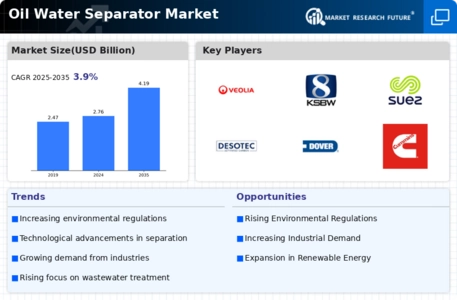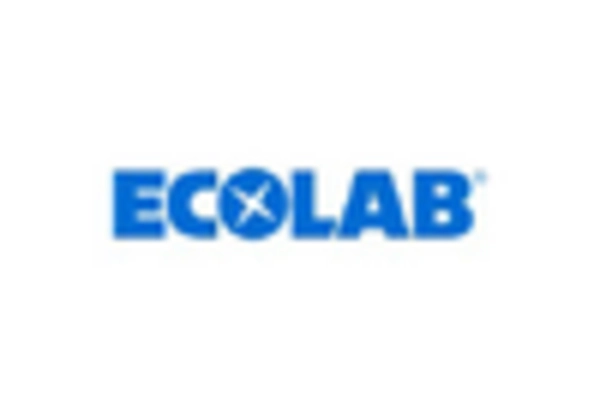Industrial Growth
The Oil Water Separator Market is poised for growth due to the expansion of various industrial sectors, including oil and gas, manufacturing, and food processing. As these industries grow, so does the need for effective oil-water separation solutions to manage wastewater and comply with environmental regulations. For example, the oil and gas sector is projected to see increased exploration and production activities, which will likely drive demand for efficient separators. Additionally, the food processing industry is also expanding, necessitating the use of oil-water separators to handle byproducts and ensure compliance with health standards. This industrial growth is a key factor propelling the Oil Water Separator Market.
Regulatory Compliance
Regulatory compliance remains a critical driver in the Oil Water Separator Market, as governments worldwide enforce stringent environmental regulations. Industries such as oil and gas, manufacturing, and wastewater treatment are required to adhere to specific standards for effluent discharge. Non-compliance can result in hefty fines and reputational damage, prompting companies to invest in reliable oil-water separation solutions. The market is projected to grow as organizations prioritize compliance with regulations like the Clean Water Act and other local environmental laws. This trend indicates a robust demand for oil-water separators that meet or exceed regulatory requirements, thereby propelling the Oil Water Separator Market forward.
Technological Innovations
The Oil Water Separator Market is experiencing a surge in technological innovations that enhance the efficiency and effectiveness of oil-water separation processes. Advanced materials and designs, such as coalescing filters and membrane technologies, are being integrated into new separator models. These innovations not only improve separation rates but also reduce operational costs. For instance, the introduction of automated monitoring systems allows for real-time performance tracking, which can lead to better maintenance and reduced downtime. As industries increasingly seek to optimize their operations, the demand for technologically advanced oil-water separators is likely to rise, driving growth in the Oil Water Separator Market.
Sustainability Initiatives
Sustainability initiatives are increasingly influencing the Oil Water Separator Market, as businesses strive to minimize their environmental footprint. The growing awareness of environmental issues has led to a shift towards eco-friendly practices, including the adoption of oil-water separators that promote resource recovery and waste reduction. Companies are now more inclined to invest in separators that not only comply with regulations but also contribute to their sustainability goals. This trend is reflected in the rising demand for separators that utilize renewable energy sources or have lower energy consumption. As sustainability becomes a core business strategy, the Oil Water Separator Market is expected to expand significantly.
Rising Awareness of Water Scarcity
The rising awareness of water scarcity is becoming a pivotal driver in the Oil Water Separator Market. As water resources become increasingly limited, industries are recognizing the importance of treating and reusing wastewater. Oil-water separators play a crucial role in this process by enabling the recovery of usable water from contaminated sources. This trend is particularly evident in regions facing severe water shortages, where industries are compelled to adopt technologies that facilitate water recycling. The growing emphasis on water conservation is likely to stimulate demand for oil-water separators, thereby contributing to the expansion of the Oil Water Separator Market.


















Leave a Comment